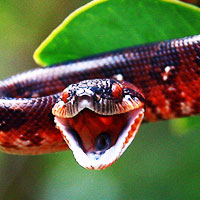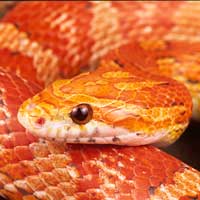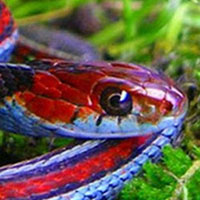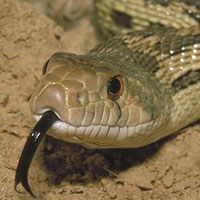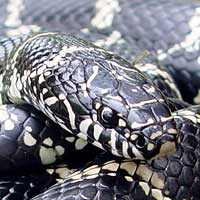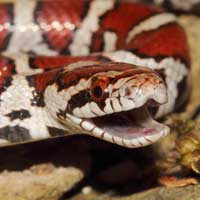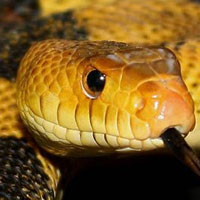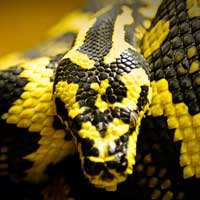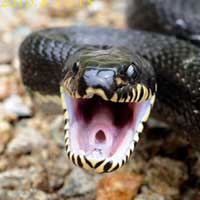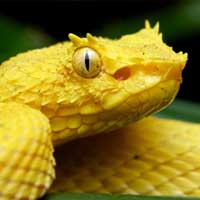Your Guide to the Black-necked Garter Snake
The scientific name of the Black-necked Garter Snake is Thamnophis cyrtopsis, and it belongs to the Colubridae family, which is the largest family of snakes and includes many non-venomous species.
Scientific Name: Thamnophis cyrtopsis
Snake Family: Colubridae
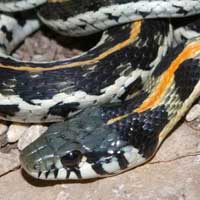
Meet the Black-necked Garter Snake
The Black-necked Garter Snake (Thamnophis cyrtopsis) is a remarkable species within the Colubridae family. Found across the southwestern United States and Mexico, this snake is recognized for the striking black markings on its neck and its preference for habitats near water. Known for its docile nature and unique appearance, this species is a favorite among reptile enthusiasts. In this guide, you’ll explore its habitat, diet, behavior, and how to care for one in captivity.
Understanding the Black-necked Garter Snake’s Habitat
The Black-necked Garter Snake is highly adaptable and thrives in a variety of environments, including grasslands, forests, and deserts. However, it is most commonly found near water sources such as streams, ponds, and marshes. These habitats provide ample opportunities for hunting and thermoregulation.
When replicating its natural habitat in captivity, consider the following:
- Temperature: Maintain a gradient of 75-85°F, with a basking area up to 90°F.
- Humidity: Keep humidity between 50-70%.
- Substrate: Use coconut fiber, soil, or bark chips to retain moisture.
| Habitat Feature | Requirement |
|---|---|
| Temperature | 75-90°F |
| Humidity | 50-70% |
| Enclosure Size | 3x2x2 feet minimum |
The Black-necked Garter Snake’s Diet and Feeding Habits
The Black-necked Garter Snake is a generalist predator, feeding on a variety of prey in the wild, including amphibians, small fish, and invertebrates. In captivity, it’s important to provide a balanced diet to ensure its health and well-being.
Dietary considerations:
- Preferred Prey: Earthworms, small fish, and amphibians like frogs or tadpoles.
- Feeding Frequency: Juveniles should be fed every 3-4 days; adults can be fed every 5-7 days.
- Supplements: Dust prey with calcium and vitamins as needed.
Behavior and Temperament of the Black-necked Garter Snake
The Black-necked Garter Snake is known for its active and curious demeanor. Being diurnal, it is most active during the day, often seen exploring its environment or basking in the sun. While generally docile, it may exhibit defensive behaviors such as releasing a musky odor when threatened.
Key behavioral traits:
- Activity Level: Highly active during the day.
- Defensive Mechanisms: Emits a musky odor or flattens its body when threatened.
- Social Behavior: Can coexist with other garter snakes in a spacious enclosure.
Health and Lifespan of the Black-necked Garter Snake
With proper care, the Black-necked Garter Snake can live up to 10-15 years in captivity. Regular health checks and maintaining optimal living conditions are crucial for its longevity.
Common health issues include:
- Shedding Problems: Caused by low humidity; ensure adequate moisture in the enclosure.
- Respiratory Infections: Often due to improper temperature or humidity levels.
- Parasites: Regularly inspect for mites and other external parasites.
Reproduction and Breeding of the Black-necked Garter Snake
The Black-necked Garter Snake is ovoviviparous, giving birth to live young. Mating typically occurs in the spring, and females give birth during late summer or early fall.
Reproductive details:
- Breeding Season: Spring (March to May).
- Litter Size: 10-25 young per litter.
- Gestation Period: 2-3 months.
Tips for Handling and Caring for Your Black-necked Garter Snake
Proper handling and care are essential for maintaining a healthy Black-necked Garter Snake. These snakes are generally tolerant of handling, but it’s important to approach them with patience and care.
Handling and care tips:
- Handling Frequency: Handle 2-3 times a week to build trust without causing stress.
- Support: Always support the snake’s body to prevent injury.
- Enclosure Maintenance: Spot-clean daily and perform a deep cleaning monthly.
Other Snakes In This Species
 Black-necked Garter Snake
Black-necked Garter Snake Blue Striped Garter Snake
Blue Striped Garter Snake Bluestripe Ribbon Snake
Bluestripe Ribbon Snake Bullsnake
Bullsnake Butlers Garter Snake
Butlers Garter Snake Checkered Garter Snake
Checkered Garter Snake Eastern Garter Snake
Eastern Garter Snake Mexican Garter Snake
Mexican Garter Snake New Mexican Garter Snake
New Mexican Garter Snake Northwestern Garter Snake
Northwestern Garter Snake Peninsula Ribbon Snake
Peninsula Ribbon Snake Plains Garter Snake
Plains Garter Snake Red-sided Garter Snake
Red-sided Garter Snake Wandering Garter Snake
Wandering Garter Snake Western Black Garter Snake
Western Black Garter Snake Western Ribbon Snake
Western Ribbon Snake
